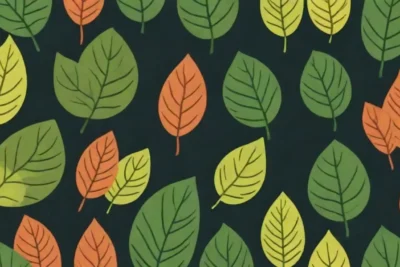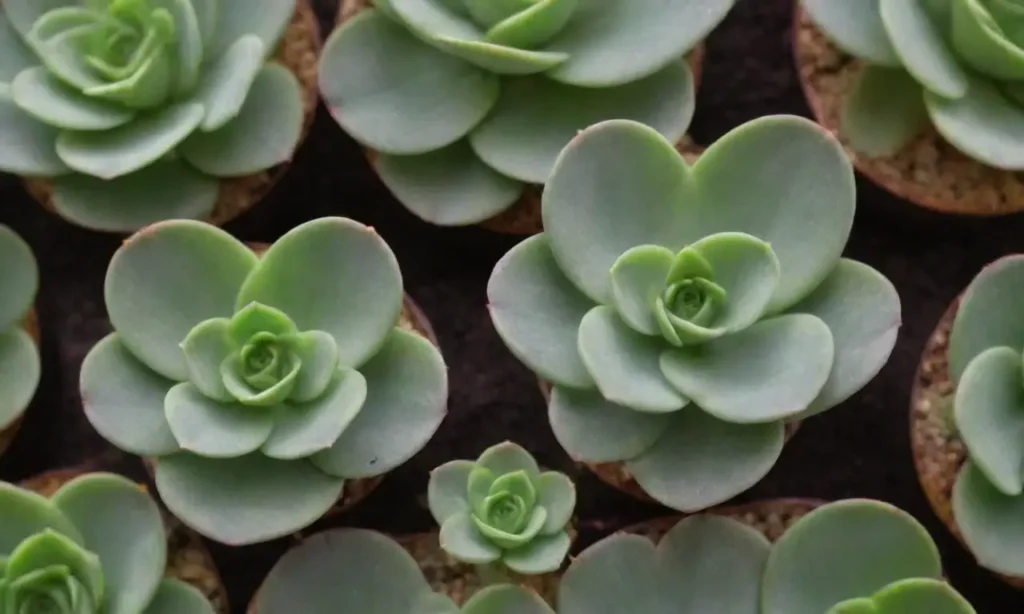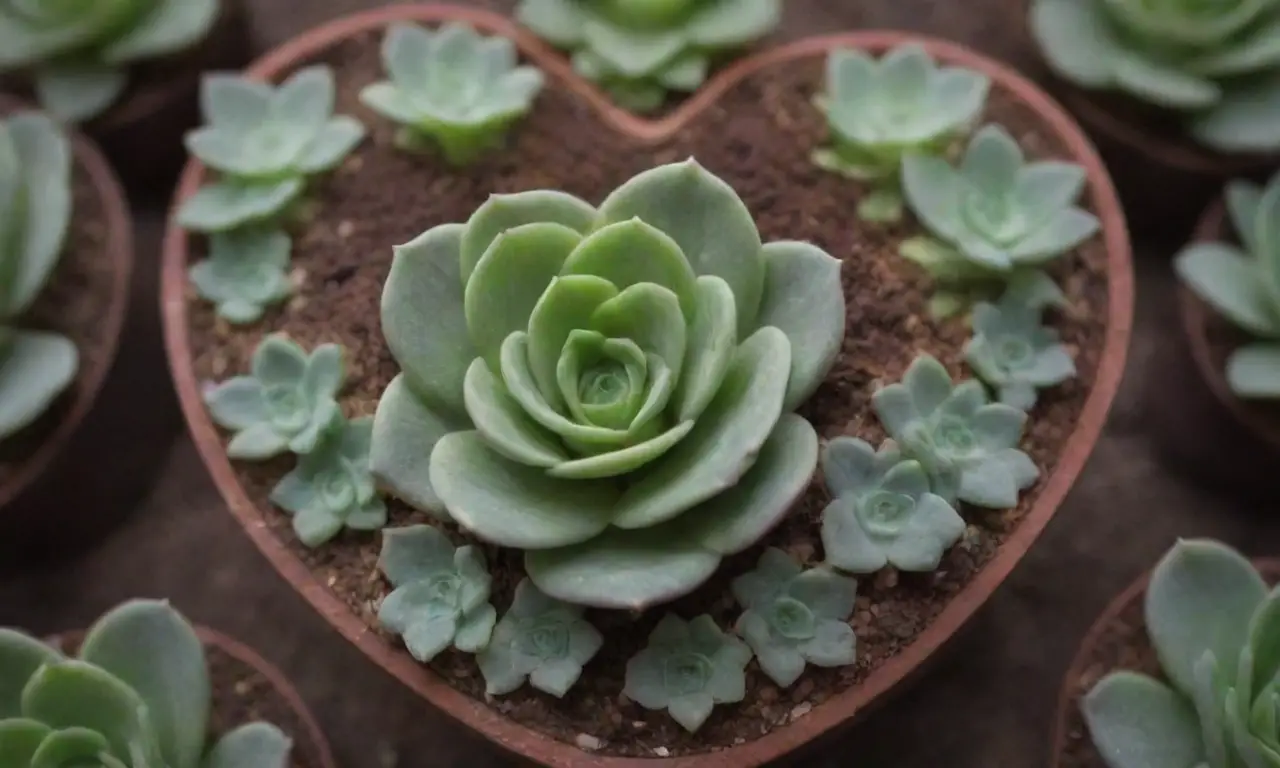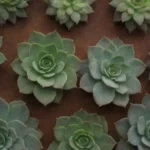
Succulents with Heart-Shaped Leaves: Symbolism and Care Tips

Introduction
Succulents have become increasingly popular in recent years, due to their unique aesthetic appeal and relatively easy care requirements. Among the myriad of succulent varieties available, those with heart-shaped leaves stand out not only for their charming appearance but also for their intriguing symbolism. These plants are often associated with love, affection, and emotional well-being, making them popular gifts for loved ones or even as personal treasures that foster positive energy in their surroundings. In this article, we will delve into the enchanting world of heart-shaped succulents, exploring their symbolic meanings, popular types, and essential care tips to keep them thriving.
By the end of this article, you will have a comprehensive understanding of heart-shaped succulents, including how to care for them, what to consider when adding them to your collection, and their significance in various cultures. Whether you are a seasoned plant enthusiast or a newcomer to the world of indoor gardening, this exploration into the symbolism and maintenance of heart-shaped succulents is sure to deepen your appreciation for these marvelous plants and enhance your home with their beautiful presence.
Understanding the Symbolism of Heart-Shaped Succulents
Heart-shaped succulents are more than just attractive houseplants; they carry a depth of symbolism that resonates with many people. The distinctive shape of the leaves often represents love, affection, and friendship. By presenting these plants to someone special, you communicate your feelings without the need for words. They serve as tangible reminders of the bond you share, making them perfect gifts for Valentine's Day, anniversaries, or even to simply celebrate a cherished friendship.
In addition to romantic symbolism, heart-shaped succulents are often associated with healing and emotional balance. Many cultures attribute these plants with the ability to foster positive energy and a sense of well-being in their surroundings. By cultivating an atmosphere filled with love and care, heart-shaped succulents can help promote mental clarity and emotional stability. Keeping one in your living space may encourage personal introspection, helping you to connect with your emotions and cultivate a loving environment.
Different cultures also attach their own meanings to heart-shaped plants. Some Native American tribes view succulents as symbols of resilience and endurance, reflecting how they thrive even in harsh conditions. This idea aligns beautifully with the notion that genuine love can endure challenges and hardships, fostering growth through adversity. By understanding these symbolic meanings, you can cultivate a more profound appreciation for your heart-shaped succulents and the positive energy they contribute to your life.
Popular Types of Heart-Shaped Succulents
While there are various heart-shaped succulents available, some species are particularly noteworthy for their stunning appearances and ease of care. The following are a few popular types of heart-shaped succulents that you might consider adding to your collection.
Hoya Kerrii
Hoya Kerrii, also known as the Sweetheart Plant, is an evergreen, vining succulent that features heart-shaped leaves. Native to Southeast Asia, this captivating plant can produce clusters of fragrant flowers when mature, adding to its allure. The succulent leaves are often glossy and can come in various shades of green. They thrive in bright, indirect sunlight and can tolerate some direct sunlight, making them flexible in terms of placement. Hoya Kerrii is particularly appealing as a gift for romantic occasions, as it beautifully represents love’s enduring nature.
 How Leaf Shapes Influence Pest Resistance in Succulent Plants
How Leaf Shapes Influence Pest Resistance in Succulent PlantsCeropegia Woodii
Another popular heart-shaped succulent is Ceropegia woodii, commonly known as the String of Hearts. This charming plant features delicate, trailing stems adorned with heart-shaped leaves that often have contrasting shades of green and silver. The String of Hearts prefers bright, indirect light, and it is relatively easy to care for, as it requires minimal watering. This succulent is often chosen for its whimsical appearance and ability to cascade from hanging baskets, providing an attractive display in any room. Ceropegia woodii is believed to symbolize love and connection, making it a lovely gift for friends or family.
Crassula Perfoliata Falcata
Known as the Propeller Plant, the Crassula perfoliata falcata is another unique succulent with charming characteristics. Its leaves may not be heart-shaped in the typical sense, but they grow closely together, forming a shape reminiscent of an open heart. This succulent showcases beautiful blue-green foliage that takes on a striking reddish hue when exposed to sunlight. The Propeller Plant prefers well-draining soil and moderate watering, making it relatively simple to maintain. It represents love and devotion, making it a thoughtful addition to any home or office space.
Essential Care Tips for Heart-Shaped Succulents

Taking care of heart-shaped succulents is not as daunting as it may seem; however, understanding their specific needs is key to ensuring their health and longevity. Here are some essential care tips to help you cultivate your heart-shaped succulent successfully.
Sunlight Requirements
Most heart-shaped succulents thrive in bright, indirect light. While direct sunlight can be beneficial for some varieties, such as Hoya Kerrii, too much can lead to leaf scorching. Placing your succulents near a south-facing window is often ideal, as they will receive plenty of natural light throughout the day. If you notice the leaves becoming pale or elongated, this may indicate that your plant is not receiving enough light. On the other hand, if the leaves appear crispy or brown, consider relocating your succulent to a less intense light source.
Watering Practices
Watering is a critical aspect of succulent care, as over-watering can lead to root rot while under-watering may cause the leaves to shrivel. Generally, it is best to water heart-shaped succulents only when the soil is completely dry. A good practice is to perform the “finger test”—insert your finger into the soil about an inch deep; if it feels dry, it’s time to water. When you do water, be sure to water generously, allowing for excess moisture to drain out of the pot’s holes. This technique promotes healthy root growth and prevents moisture from sitting in the soil, which can lead to rot.
Soil and Fertilization
Using well-draining soil is vital for the health of heart-shaped succulents. A cactus or succulent mix is typically the best choice, as it allows for proper airflow and drainage. If you’re feeling adventurous, you can create your own mixture by combining potting soil, sand, and perlite or pumice at equal ratios. Regarding fertilization, heart-shaped succulents do not require frequent feeds; however, you can apply a diluted succulent fertilizer during the growing season (spring and summer) approximately once a month. This boost of nutrients can help promote lush leaf growth and vibrant colors.
 Why Leaf Shape Matters in the Role of Succulent Photosynthesis
Why Leaf Shape Matters in the Role of Succulent PhotosynthesisCommon Pests and Problems
While heart-shaped succulents are relatively resilient plants, they are not wholly immune to pests and diseases. Understanding common issues can help you address them before they become problematic.
Pest Infestations
Common pests that target succulents include mealybugs, aphids, and spider mites. These insects can sap the plant’s energy and contribute to its decline. It's important to regularly inspect your plants for any signs of pests, such as webbing or discoloration. If you identify an infestation, gently wipe the leaves with a damp cloth and treat with insecticidal soap or neem oil. Regular monitoring and proper care can help prevent pest infestations from becoming a significant issue.
Fungal Issues
Fungal problems may arise if your heart-shaped succulents are over-watered or if air circulation is inadequate. Issues such as root rot are the most common, manifesting as mushy, blackened roots and leaves. To prevent this, ensure that you are adhering to proper watering practices and using well-draining soil. If you discover root rot in your plant, you may need to remove it from the pot and inspect the roots. Cut away any rotten sections and replant in fresh soil, allowing the roots to dry before watering again.
Conclusion
Heart-shaped succulents are not only visually striking; they carry significant symbolism related to love, friendship, and emotional well-being. As you explore the various types of heart-shaped succulents, such as Hoya Kerrii, Ceropegia woodii, and Crassula perfoliata falcata, you’ll find their unique forms and growth habits enchanting. By understanding the care requirements and potential challenges associated with these plants, you can ensure a thriving environment where they can flourish.
Incorporating heart-shaped succulents into your home or gifting them to loved ones can foster feelings of camaraderie, love, and positivity. Their resilience emphasizes the idea that genuine connections can endure life’s ups and downs, just like these remarkable plants. By adhering to proper sunlight, watering, soil, and fertilization practices, you can successfully nurture heart-shaped succulents and enjoy their beauty for years to come.
Ultimately, whether you are drawn to heart-shaped succulents for their aesthetic appeal or their deeper significance, caring for these plants can be a rewarding experience. Embrace the joy and connection they bring, and let their down-to-earth elegance enhance your home and relationships.
 Thick and Thin: Variations in Succulent Leaf Thickness
Thick and Thin: Variations in Succulent Leaf ThicknessIf you want to read more articles similar to Succulents with Heart-Shaped Leaves: Symbolism and Care Tips, you can visit the Leaf Shapes category.

You Must Read